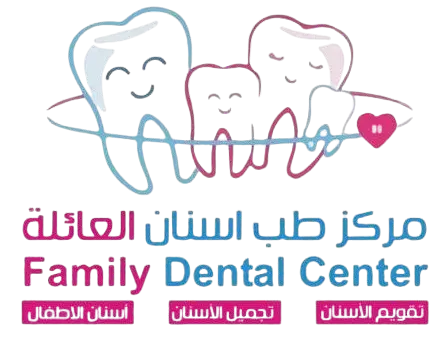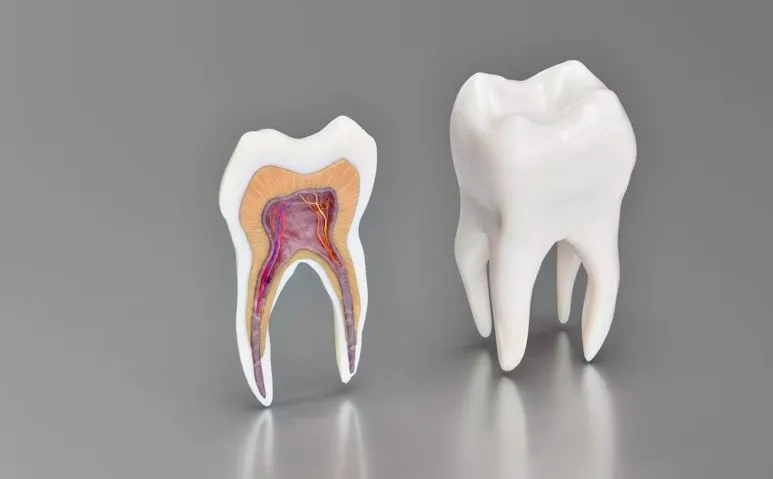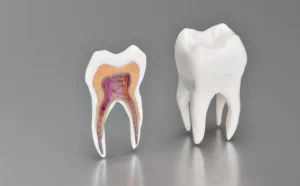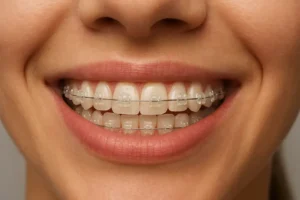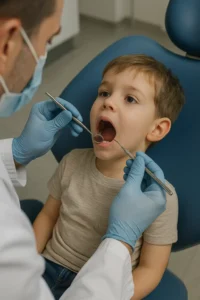Why Do We Have Wisdom Teeth
The Purpose of Wisdom Teeth
Wisdom teeth, also known as third molars, are the last set of teeth to develop in the back corners of the mouth. They typically appear between the ages of 17 and 25. Their main purpose is to help in chewing and grinding food, especially tougher items. In the past, when people had diets that included raw plants, seeds, nuts, and uncooked meats, extra molars were useful for breaking down hard and coarse foods.
Ancient Diets and the Need for Extra Molars
In earlier times, our ancestors lived without modern cooking tools or techniques. Food was tougher and required more effort to chew. Because of this, people needed stronger jaws and more teeth to help them eat properly. Wisdom teeth played a key role in helping them handle these hard foods. Without the soft, processed foods we enjoy today, the extra molars made eating more manageable and efficient.
Jaw Size Then and Now: What Changed?
Over time, as human habits and diets changed, so did our bodies. Today, we eat softer, cooked foods that don’t require as much chewing power. As a result, our jaws have become smaller than those of people in the past. This smaller jaw size means there is often not enough space for wisdom teeth to grow in properly. When these molars try to come in, they can become misaligned, impacted, or cause crowding in the mouth.
Why They’re Called ‘Wisdom’ Teeth
Wisdom teeth get their name because they appear later in life, during the late teenage years or early adulthood — a time when individuals are thought to gain more “wisdom” or maturity. It’s simply a symbolic term and has no connection to actual intelligence, but it reflects the timing of their appearance in life.
Do We Still Need Wisdom Teeth Today?
In modern times, most people don’t actually need wisdom teeth. With smaller jaws and better dental care, these extra molars often create more problems than benefits. In many cases, dentists recommend removing them to prevent pain, infection, or damage to other teeth. Although they once served an important role, wisdom teeth are now more of a dental concern than a necessity.
Common Problems Associated with Wisdom Teeth
Wisdom teeth, or third molars, can be a source of discomfort and dental complications for many individuals. While some people may have no issues at all, it’s very common for
these teeth to cause problems due to their position, the lack of space in the jaw, or how they grow. Below are some of the most frequent problems associated with wisdom teeth.
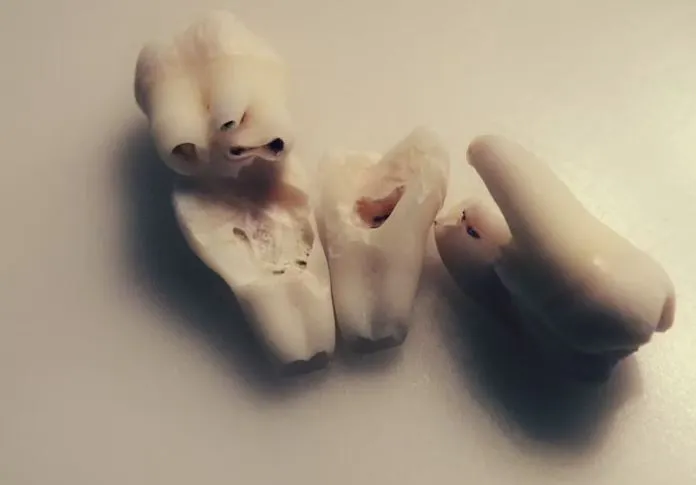
Impacted Wisdom Teeth: When They Don’t Erupt Properly
One of the most common issues related to wisdom teeth is impaction. An impacted wisdom tooth is one that doesn’t have enough room to emerge or develop normally. Instead of growing straight up like other teeth, impacted wisdom teeth may grow at an angle, press against neighboring teeth, or remain trapped under the gum or jawbone.
Impacted wisdom teeth can be classified into different types, depending on their position — for example, horizontal, vertical, mesial, or distal impaction. These unusual growth angles often lead to pain, swelling, and pressure in the jaw. In some cases, impacted teeth may not cause immediate symptoms but can still lead to long-term issues if left untreated.
Pain and Swelling: Signs of Trouble
Pain and swelling around the back of the mouth are often early signs that something is wrong with the wisdom teeth. This discomfort can range from mild irritation to severe, throbbing pain that affects daily life. It can also spread to the jaw, ear, or side of the face.
Swelling may occur in the gums surrounding the tooth, especially if the wisdom tooth is partially erupted. This partial eruption can create a flap of gum tissue that traps food and bacteria, leading to infection and further pain. In more severe cases, swelling may be accompanied by fever, difficulty opening the mouth (a condition known as trismus), and even difficulty swallowing.
Ignoring such symptoms can lead to more serious infections or damage to nearby structures, which is why dental evaluation is strongly recommended when such signs appear.
Crowding and Shifting of Other Teeth
Wisdom teeth often cause crowding, particularly in people who already have limited space in their jaws. As these teeth begin to push through, they can put pressure on adjacent molars, causing the entire row of teeth to shift.
This is especially problematic for individuals who have had orthodontic treatment, such as braces. The arrival of wisdom teeth can undo years of orthodontic work by moving teeth out of alignment. It can also make cleaning between teeth more difficult, increasing the risk of cavities and gum disease.
In many cases, dentists or orthodontists may recommend the early removal of wisdom teeth to prevent potential crowding or to protect the results of orthodontic treatment.
Infections and Gum Inflammation
Wisdom teeth, especially when partially erupted or impacted, can create pockets in the gums where food particles and bacteria accumulate. This leads to a condition known as pericoronitis — an infection and inflammation of the gum tissue surrounding a partially erupted wisdom tooth.
Pericoronitis can cause pain, swelling, redness, and a bad taste or odor in the mouth. In more advanced cases, it can lead to pus discharge, fever, and swollen lymph nodes in the neck. If left untreated, the infection may spread to other parts of the jaw or face, potentially requiring emergency treatment.
Proper oral hygiene can help prevent minor infections, but in many cases, the best solution is the removal of the problematic wisdom tooth to eliminate the source of the recurring infection.
Tooth Decay in Hard-to-Reach Areas
Even if a wisdom tooth erupts fully, it is often positioned far back in the mouth, making it difficult to clean properly. This area is hard to reach with a regular toothbrush and floss, which means food debris and plaque can easily build up on and around the tooth.
This buildup leads to a higher risk of tooth decay, not just in the wisdom tooth itself, but also in the neighboring second molar. Cavities in these areas are harder to detect and treat, and the decay may go unnoticed until significant damage has occurred.
In some cases, a wisdom tooth may also develop a cavity that’s difficult to fill due to its position and angle. In such situations, dentists may recommend extraction rather than restoration, especially if the tooth is already causing other complications.
Conclusion
Although wisdom teeth were once essential for our ancestors due to their rough diets and larger jaws, they have become more of a liability than a benefit for most people today. Common problems such as impaction, pain, infections, crowding, and decay can lead to serious dental issues if not addressed promptly.
Regular dental check-ups, X-rays, and professional guidance are crucial in determining whether wisdom teeth are growing in a healthy way or if they need to be removed. Addressing wisdom tooth problems early can help avoid more serious complications and protect overall oral health in the long term
Treatment Options for Wisdom Teeth
Treatment for wisdom teeth depends on their position, condition, and whether they are causing any complications. While not everyone needs to have their wisdom teeth removed, many people do experience issues that require dental intervention. Removal is generally necessary when the wisdom teeth are impacted, partially erupted, or causing symptoms such as pain, swelling, infection, or damage to neighboring teeth. Dentists may also recommend removal if X-rays show the teeth are likely to cause problems in the future, even if no immediate symptoms are present. Preventive removal is often advised during the late teenage years or early twenties, as the roots are not fully developed, and recovery tends to be faster.
When Is Removal Necessary?
Wisdom teeth removal becomes necessary when complications arise such as persistent pain, swelling, recurrent infections, damage to adjacent teeth, or evidence from X‑rays indicating future problems. Even if symptoms are mild, a dentist may suggest extraction when a wisdom tooth is impacted, partially erupted, or growing at an awkward angle that may later lead to issues. Preventive removal in late adolescence or early adulthood is often considered because the roots are less developed, which can make surgery easier and recovery faster.
Surgical vs. Non‑Surgical Treatments
Non‑surgical extraction (also called simple extraction) is possible when a wisdom tooth has fully erupted, is accessible, and is free from severe complications. In this case, a dentist can loosen the tooth and remove it using forceps under local anesthesia. In contrast, surgical extraction is required when the tooth is impacted (stuck under bone or gum), partially erupted, or positioned at an angle. Surgical procedures often involve making an incision in the gum, removing bone if needed, and sometimes dividing the tooth into smaller pieces to facilitate removal
What to Expect During Wisdom Tooth Extraction
The process usually begins with local anesthesia to numb the area; sedation or general anesthesia may be used in more complex cases. If it’s a simple extraction, the dentist will apply steady pressure to loosen and remove the tooth. In surgical cases, after making an incision in the gum, the dentist may remove bone and section the tooth to extract it more easily. The surgical site is then cleaned, and stitches may be placed to support healing. Depending on complexity, the procedure can take from 30 to 60 minutes or more.
Recovery and Aftercare Tips
Immediately after extraction, patients may experience swelling, bleeding, and mild to moderate pain. It’s important to rest, apply cold compresses, and avoid strenuous activity. For the first few days, one should eat soft foods, avoid hot drinks, and refrain from using straws (to prevent dislodging the blood clot). Gentle rinsing with warm salt water can begin about 24 hours after surgery, but avoid vigorous rinsing. Pain relief—prescribed or over‑the‑counter—should be used as directed. Avoid smoking and keep the surgical site clean to minimize risks of complications like dry socket. Healing typically improves by days 3–7, though full recovery may take longer depending on individual cases.
Alternatives to Extraction: Are They Effective?
In some cases where the wisdom teeth are fully erupted, symptom-free, and easily accessible, dentists may opt for “watchful waiting.” This involves regular monitoring with X‑rays and dental exams rather than immediate extraction. Some milder issues like gum inflammation can be managed temporarily with improved oral hygiene, professional cleaning, or minor treatments like operculectomy (removal of overlying gum tissue). However, these alternatives may only delay the problem, and extraction often remains the safest long‑term solution when symptoms worsen or structural risk increases
